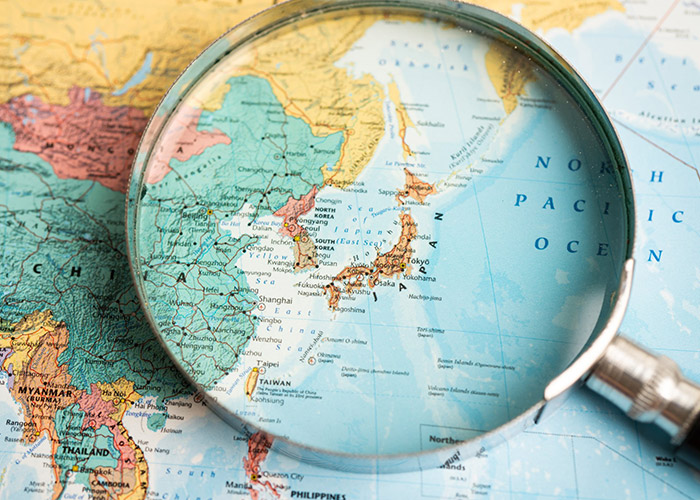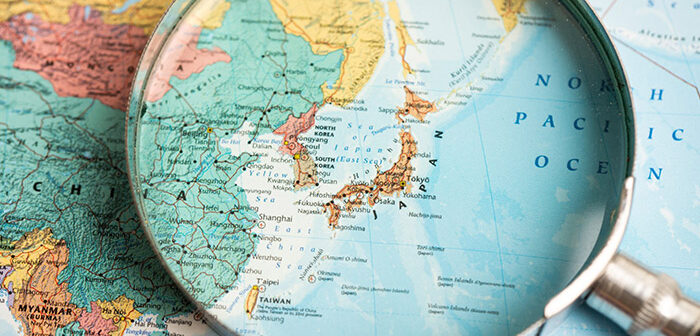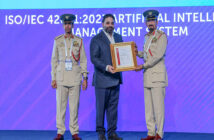
By Colonel Yoshimasa Adachi, National Defense Academy of Japan
Japanese Prime Minister Ishiba visited Vietnam and the Philippines in April 2025. Immediately after taking office in October last year, he visited Laos to attend a summit with the Association of Southeast Asian Nations (ASEAN) and also visited Malaysia and Indonesia in January this year.
“In an increasingly uncertain international community, I want to place greater importance than ever on relations with Southeast Asia,” Ishiba said, emphasising the importance he places on relations between Japan and Southeast Asian countries.
Southeast Asian generally refers to 11 countries – the ten ASEAN member states plus Timor-Leste, which is a candidate for membership – and has a combined population of approximately 680 million.
Geopolitically, it is located at a strategic point connecting the Indian and Pacific Oceans and encompasses the Straits of Malacca and Singapore, where important shipping lanes converge and which are choke points on sea lanes. These sea lanes are also vital to Japan, which relies on imports for the majority of its resources, including oil. Therefore, regional stability in Southeast Asia is essential for Japan’s security.
China is strengthening its influence in these Southeast Asian countries. Through its One Belt, One Road initiative, China has been expanding its presence via massive infrastructure investments. China and ASEAN are each other’s largest trading partners, and Chinese direct investment in ASEAN reached USD17.6 billion in 2023, nearly three times higher than a decade ago.
Meanwhile, China is actively expanding into the ocean while continuing its opaque military buildup. In the South China Sea, where China is disputing sovereignty with the Philippines, Vietnam, and others, it is reclaiming islands and moving forward with turning them into military bases.
Also in April 2025, expansion work on the Ream Naval Base in Cambodia was completed with Chinese assistance. The base will house a centre for joint training and rescue operations, to be co-operated by the two militaries. Ream Naval Base is located on the Gulf of Thailand, just a stone’s throw from the South China Sea.
In response to this expansion of Chinese influence, Southeast Asian countries are treading carefully. They are reluctant to confront China due to strong economic ties, but they also do not wish to become subordinate to it.
To balance this, they require the presence of the United States. The US recognises the strategic importance of Southeast Asia and has expressed strong support for ASEAN centrality and unity in official documents regarding ASEAN.
Looking at individual countries, the Philippines is an ally of the United States based on the US-Philippines Mutual Defense Treaty, while Thailand has also been an ally since the signing of the Southeast Asia Collective Defense Treaty (Manila Pact) of the former SEATO. The US has also established a Comprehensive Strategic Partnership with Vietnam and is strengthening economic and security ties.
In a survey of ASEAN experts conducted by a Singapore think tank in April 2025, 52.3% said they would choose the United States over China if forced to form an alliance, while 47.7% favoured China – indicating a near-even split. At present, Southeast Asian nations are carefully balancing between the US and China.
However, the Trump administration’s announcement of reciprocal tariffs on various countries in April 2025 has caused unrest among Southeast Asian countries and benefited China. Just two weeks after this announcement, Chinese President Xi Jinping visited Vietnam, Malaysia and Cambodia to solidify ties with countries feeling under pressure from the reciprocal tariffs.
For Southeast Asian countries, whose economies are inevitably suffering as a result of Trump’s tariffs, China’s infrastructure projects and expanded agricultural imports offer an appealing alternative. Even Vietnam, despite ongoing territorial disputes in the South China Sea, signed 45 agreements with China, including plans to build a railway linking the two countries.
Vietnam, which fought a war with China in 1979, has long been wary of infrastructure that could be used for military mobilisation, but appears to have prioritised economic cooperation with China. China’s moves to align Southeast Asian countries in an anti-American bloc will ultimately shape an international environment favourable to China – and pose significant risks to Japan’s economic and security interests.
To prevent such a scenario, Japan must, as Prime Minister Ishiba stated at the beginning of this article, place even greater emphasis on its relations with Southeast Asian countries, deepen engagement with those drifting from the US due to Trump’s tariffs, and counterbalance their pivot toward China.
Japan has long supported the economic development of Southeast Asia through official development assistance, building deep relationships of trust. Japan is leading the Trans-Pacific Partnership (TPP), which includes 12 member countries such as Malaysia, Singapore, Vietnam and Brunei, and can leverage this framework to promote free trade. Japan has also supplied patrol vessels to the coast guard authorities of the Philippines, Indonesia, and Malaysia and is helping train to enhance maritime security.
In addition, the Western Pacific region is highly prone to natural disasters, and Japan cooperates with countries such as the Philippines, Indonesia, Vietnam on disaster prevention.
Many public opinion polls show Japan as the most trusted country in the region. Notably, the first foreign vessel to call at Cambodia’s newly expanded Ream Naval Base was from the Japan Maritime Self-Defense Force.
Furthermore, with all four countries visited by Prime Minister Ishiba – Malaysia, Indonesia, Vietnam, and the Philippines – leaders reaffirmed the importance of maintaining and strengthening a free and open international order based on the rule of law. They agreed to cooperate in realising both the free and open Indo-Pacifi vision and the ASEAN outlook on the Indo-Pacific.
The continued presence of the US in Southeast Asia is essential to preserving this rules-based international order. As a United States ally, Japan must actively promote American engagement in the region – while working to prevent Southeast Asia nations from drifting away from the United States into China’s orbit.






